Interested in a dog-themed field of business and have an affinity for art? You might want to consider becoming a pet photographer!
As a pet photographer, you’ll help capture precious memories for families of their pets.
Many pet photographers also volunteer their time and skills to help get animals adopted from shelters, allowing you to really help out animals in need through your work.
Here’s what you need to know to become a pet photographer.
Pet Photography: A Great Job For Art & Animal Lovers!
As a pet photographer, you’ll be able to decide which area you’d like to focus on. Just like being a dog trainer, in many ways it’s best to niche down in your marketing.
You can always expand out from your niche, but marketing gets a bit easier if you position yourself as the “Dog Show Photographer” or “Pet Family Portrait Photographer” rather than a generic “pet photographer.”
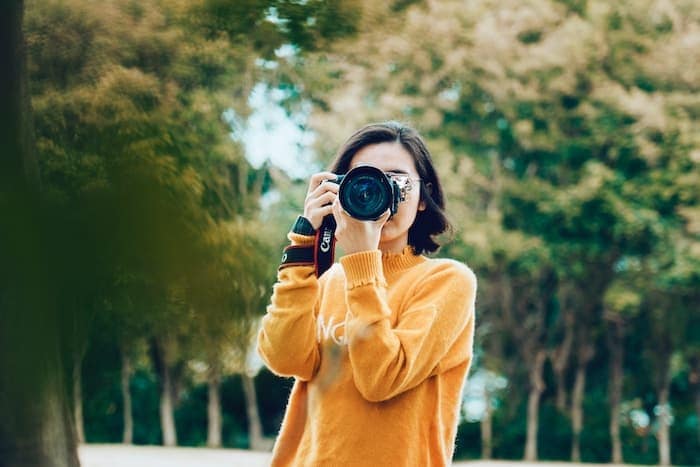
Some example niches for pet photographers include:
- Pet Portrait Specialists. If you go this route, you’ll need to set up a studio – many pet portraits are done indoors as well as outside. An indoor studio allows more flexibility as far as lighting goes, but startup costs can be high. If you don’t have a studio, you’ll have to be able to schedule sessions in specific locations and plan photo shoots based on the available sunlight and weather!
- Dog Show and Trial Photographers. Many dog shows and trials hire photographers to cover the gig. You may be paid by the trial organizers, or will rely on generating revenue through owners purchasing photos of their dogs from the show (or both). This gig requires an intimate understanding of the shows that you’re covering. Getting a great shot at an agility trial without distracting the dog (and risking an enraged owner) is no small task! Fast-paced trials can also be difficult to shoot because dogs only run the course once or twice, and if you miss the fast-moving dog, you can’t try again. Dog shows are almost always on the weekend and require extensive travel.
- Marketing Photographers. Brands like Ruffwear and PetCo have professional photographers on staff. While it’s not easy to get hired for one of these positions, a marketing gig allows you to avoid the headache of owning your own business. Depending on which company you work for, your hours and travel schedule can still be quite intense with this position!
- Shelter Dog Portrait Specialists. Some large animal shelters have a part-time (or even full-time) pet photographer on staff. Many of these positions are a great way to supplement your business with extra, recurring income – and some can even be a full-time job. Whether you do this part-time, full-time, or volunteer, helping get pets adopted through breathtaking portraits is a noble use of your skill!
Perks and Setbacks of Being a Pet Photographer
- You set your own hours and rates. You can charge whatever you’d like and work whenever you please. Like with many other small businesses, of course, this comes with some pros and cons. While you can technically set your own hours, you’ll likely have to work weekends to make this job profitable, and chasing down potential clients can take a lot out of you.
- Time spent with animals, without the cleanup. Unlike many other dog-focused businesses, pet photographers rarely have to deal with the grosser sides of animal handling. Doggie daycares, dog trainers, and veterinary staff all have to deal with more poo and pee than pet photographers!
- People Skills Required. Like with most other dog-focused fields, pet photographers also need excellent people skills. Navigating the expectations of clients is never easy, and sometimes it’s hard to get clients to understand why rates are a certain price. Though many clients will be grateful for the work you do and are going to love their pet’s photos, some clients will always be a bit harder to please. In other words, this isn’t the job for someone who doesn’t like people!
Skills & Equipment Required For Pet Photography
Pet photography isn’t an easy or cheap profession to get into. While things are going to be easier for you if photography is already a hobby, expect significant startup costs.
At a minimum, you will need:
A DSLR Camera
Many professional photographers actually own a few different cameras, but starting out, you will probably be just fine with one.
The Nikon D5300 (this set is an excellent starter) or Canon 7D (a higher quality camera that will do better for action shots) are good all-around cameras to start with for dog photography.
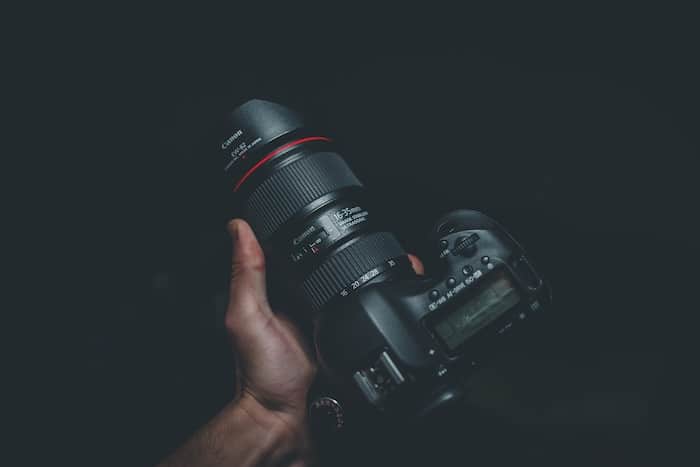
A Few Solid Lenses
You’ll need different lenses depending on what sort of pet photography you’re doing.
If you’re mostly focusing on portraits, you’ll need a different setup versus someone who’s planning on photographing the Iditarod!
Fixed lenses work great for studio work, but you’ll likely need some zoom lenses for event work, that that’s when things can get quite pricey.
For Beginner Pet Portraits: You can’t go wrong starting off with the much-adored, budget-friendly 50mm fixed lens (lovingly nicknamed the nifty fifty). If you’re not used to having a fixed lens, it can take some getting used to (no zoom means you’ll have to move around a lot more, physically getting closer or farther from your subject as needed). However, the low f-stop allows for great natural light options and some beautiful depth-of-field effects.
Dog-Friendly Props
If you’re mostly focusing on family portraits, it’s smart to have some props on hand. Flower headbands, cute stuffed toys, and baskets can all be used to create adorable and memorable photos. Get creative!
A few favorites include:
- Flower crowns are especially popular for bully breed dogs (like American Bulldogs) and for sighthounds, but all dogs look great in them!
- Small chalkboards for hanging around the dog’s neck or behind the dog.
- Gorgeous handmade bandanas to make the dogs really stand out.
- A variety of toys and chews to keep the dog busy.
- An elevated surface for the dogs to stand on to create unique shots.
- Food-themed plushies also allow for some pretty adorable photo moments.
NOTE: Make sure to ask clients to bring in a favorite toy their pet loves. Even raggedly old toys can be precious if it’s one your dog has had forever, and many owners end up enjoying having at least one photo of their pet with their favorite plaything (whether that’s a tennis ball for fetch-manics or a giant Kong for tough guys).
Also consider keeping on hand some seasonal-themed props like squeaky toy pumpkins, candy canes, etc for specific holidays.
Pet Photography Portfolio and Website
You’ll need a place to display your work and attract clients. While you may be able to attract client through Instagram, it’s important to have a full site set up where people can book you, see your prices, and flip through past photo shoots.
Option 1: WordPress
For those who are a bit more web-savvy, WordPress is a great option that allows for a lot of customization and fine-tuning.

With WordPress, you’ll need to:
- buy a domain (GoDaddy is a great domain marketplace to start)
- purchase hosting service (WPX is who we use – they rock and have amazing customer service!)
- buy a theme (optional but highly recommended – Generate Press is one of the most popular)
WordPress is often the better pick for folks who want to build out a significantly-sized site. If you’re just looking to showcase your portfolio and add a contact form, the easier-to-use Wix or SquareSpace might be a better option.
We use WordPress for K9 of Mine, and it works well for our massive site, but I’d be lying if I didn’t admit that there have been headaches and hair-pulling along the way, especially when I first was setting up the site and didn’t know as much as I do today.
PROS: Thousands of themes and plug-ins to add all kinds of features to your site, plus easy to find a developer who knows WordPress. Lots of customization and easy to scale from a starter blog to a larger website.
CONS: While WordPress isn’t exactly complicated, it can have a bit of a learning curve for newbies unfamiliar with content management systems. The process of signing up with hosting, buying a domain, and choosing a theme can be a lot for those who aren’t comfortable on the web.
PRICE: WordPress itself is free, but buying a domain, hosting services, and themes will cost you.
Option 2: Wix
If you’re more of a beginner, Wix is a great option – it offers a really easy-to-use setup wizards that lets you build a beautiful website in minutes.

With Wix, you get access to hundreds of beautiful-looking templates, with plenty of specific photography-geared templates to get you started.
Wix also offers a decent number of free apps (as well as paid ones) that can add additional functionality to your site.
Another advantage is that Wix does offer a free plan – – if you’re not too keen on whipping out the credit card right away, the free option is nice to get started and play around a bit before making a monetary commitment.
PROS: Definitely the easiest to get started with. Lots of training videos and walk through guides. Free to start.
CONS: While Wix is free to get started with, you may need to pay more as your site grows. It can also be a pain to move off of Wix onto another platform if/when you’re ready to leave. Wix’s themes also aren’t completely mobile-responsive, so you may need to tweak things to look good on smartphones. Once you choose a theme, you can’t easily switch, so choose a design you like off the bat.
PRICE: $12 – $18 per month.
Option 3: SquareSpace
Similar to Wix, SquareSpace offers an easy-to-use setup wizard that can get you up and running with your new website fairly quickly.
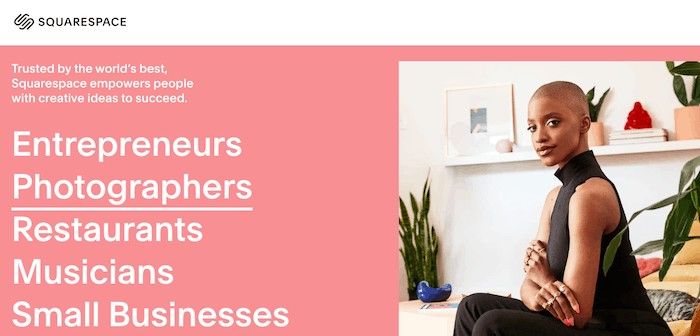
As far as ease-of-use, SquareSpace sits in the middle – it’s not quite as easy as Wix, but definitely not as complicated to use as WordPress.
SquareSpace offers tons of gorgeous, visually-oriented templates that can be used to showoff your best shots.
However, changes can be tough to figure out with SquareSpace – there isn’t an extensive add-on/plugin marketplace as there is with Wix and SquareSpace, so if you don’t know code, you’re kind of stuck with the template you choose.
While the website builder is certainly helpful, it doesn’t seem to be quite as intuitive as the Wix builder, so it may take some time to really master SquareSpace’s builder.
PROS: Membership includes hosting, and solid customer service gives you 24/7 access to help when things go wrong. Great for minimalist designs. You can also switch design themes whenever you want, and SquareSpace themes are also mobile-responsive.
CONS: SquareSpace doesn’t make it easy to add functionality (while WordPress and Wix both have plug-in/add-on shops). If you want to add functionality in SquareSpace, you’ll need to do some HTML.
PRICE: Free tier is available, while premium memberships (which include a custom domain, more storage, ad removal) range from $11 – $35 per month.
Lighting Equipment
External flashes, studio lights, backdrops, and reflective shields can all really take your photos to the next level.
These lighting extras are more important for portraits (you probably won’t be able to bring them into an agility ring), so do your research on which tools are best for your chosen niche.
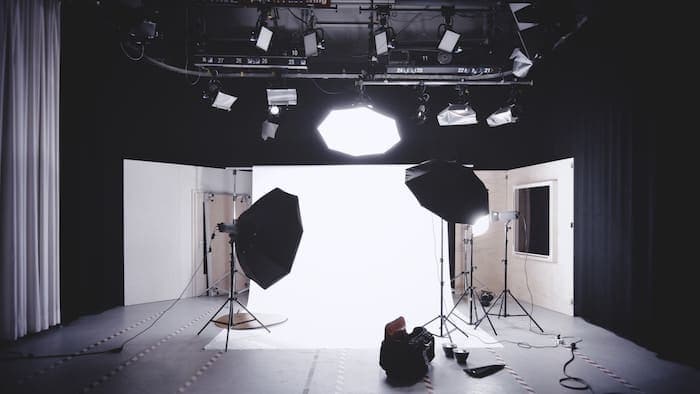
For External Lighting:
One of most basic rules of photography is to turn off your camera’s flash and opt for natural light instead. For indoor studio work, you’ll still want to ditch your standard flash, but will likely need to use external lighting to illuminate your subject indoors.
Light umbrellas are great for portrait studios, emitting a soft, diffused light that can help light a subject without creating harsh shadows.
STARTER PICK: The LimoStudio Umbrella Lights are great for newbies, as they’re nice quality without breaking any budgets. The kit even includes a carrying case and bulbs too!
- ▶️ 【Contents】 (2 x) 33-inch White Umbrella / (2 x) 33-inch Black & Silver Umbrella / (3 x)...
- ▶️ 【Enhanced Light】 2,100 Lumen Light Bulbs Create 700W Equivalent Brightness with 5,500K...
- ▶️ 【Quality Umbrella】 White Umbrella with Soft & Even Texture Spreads Light so Evenly &...
- ▶️ 【Light Bulb Socket】 UL Listed Safety Proven Bulb Socket with Umbrella Install Lock / 11...
For Backdrop Support & Stand:
This is another item that’s only necessary for studio work. Whether you want to use a plain white backdrop, a green screen, or fun pattern backdrops, you’ll need a stand to support those backgrounds!
STARTER PICK: The Julius Studio Backdrop Support Kit is a decent one to start with. It includes an extendable crossbar, support stands, clips, and a carrying case. No backdrops are included – you need to grab those separately!
- ▶️ 【Contents】 (1 x) Telescopic Crossbar, 2-Set / (2 x) Heavy Duty Side Stands / (6 x) Spring...
- ▶️ 【Dimension】 Adjustable Width Max: 10.16 ft. – Min: 5.3 ft. / Height: Max: 8 ft. –...
- ▶️ 【Upgrade Features 1】 Upgraded Pole Thickness & Strong Joints for No Shaking / New Metal...
- ▶️ 【Upgrade Features 2】 Larger & Stronger Structure Enables Outdoor Activities & Weather...
Alternatively, you can get an entire beginner portrait studio pack with lighting equipment, backdrop supports, as well as backdrops in a complete kit.
This set from Neewer also includes softbox lights, which are similar to umbrella lights, but offer a more controlled diffused light that can also be hooked up as “slave flashes” that can flash bright light when you take your photo, rather than blinding your subject with bright, continuous light.
For Reflective Shields:
Reflective shields are handy for indoor portraits but are also hugely helpful for outdoor shots when you want to reflect extra natural light onto your subject.
Reflective shields come in different sizes and materials based on the effect you are trying to achieve (gold adds warmer tones, black blocks out light, white brightens shadows, etc).
Keep in mind you’ll need an assistant to hold the shield and position it as per your instructions.
STARTER PICK: The Etekcity 24” Reflector Disk is a great one to start with – it’s actually a 5-in-1 disk, so you can choose which material you want based on what your needs are in the studio.
- 5-In-1 lightweight reflector: Gold, silver, white, black and translucent
- Gold: warm up the picture; Silver: brighten the picture; white: bounce light into shadows; black:...
- Collapse multi-disc light reflector into a portable size for travel or storage, best for...
- This photography reflector comes with 10-inch durable zippered carrying pouch
Some Experience with Pets
While you certainly can get into pet photography without being a professional trainer or vet, it’s good to have a basic understanding of dog body language and how to move around dogs.
Photos of happy dogs are much more appealing, and it’s easier to make a dog happy if you really understand dogs. Just liking dogs or “having a way with animals” isn’t really enough – it’s important to dedicate some time to learning how to read dog body language and how to make skittish or excited dogs more relaxed.
Canine Photography Photo Editing Software
Even the best photos generally require some touch-up after the shutter clicks. Adobe Lightroom or Photoshop are both popular for a reason! Editing is part of the photography process, and investing in good software helps you provide your clients with the best photos possible.
Aside from startup costs, keep in mind that freelancing or owning your own business can be a lot of work on the business end of things!
Owning your own business and working from home is great in many ways – you can make your own schedule, rates, and job description.
But someone also has to deal with taxes, business plans, health insurance, business insurance, and more. That person will probably be you.
Pet Photography Courses: Learning How to Shoot People’s Pets
One of the best ways to learn pet photography is through a course. Online classes allow you to practice and work at your own pace, regardless of your schedule.
You’ll still need to get out and practice, but you won’t be held to a rigid schedule or feel pressured at first like in an in-person class.
If you already have experience working as a professional photographer and just need to adjust a bit to working with furry clients, make sure to check out our dog photography tips for beginners!
Otherwise, if you’re starting from scratch, there are some great online courses that can help you polish up your photo skills.
Here are a few online courses for learning pet photography:
Pet Photography Masterclass. This introductory course will give you the basics of how to compose good photos, set up photoshoots, and edit photos in Photoshop or Lightroom.
The course is geared towards pet parents, but also includes some information on monetizing your photos. While this is the only class we recommend that’s pet-specific in the title, it doesn’t actually seem to have much information that’s pet-specific as far as body language or dog photo pose ideas!
- Hours: 2
- Experience Level: beginner
- Rating: 4.4 / 5 with nearly 50 ratings
Photography Masterclass: A Complete Guide to Photography. This intensive class really takes you from A to Z of learning photography. While it’s not pet-specific, this course is much more in-depth. It’s over 10x the length of the pet-specific course above, and it’s a top seller on Udemy with good reason!
- Hours: 21
- Experience Level: Beginner to intermediate
- Rating: 4.6 / 5 with over 13,000 ratings
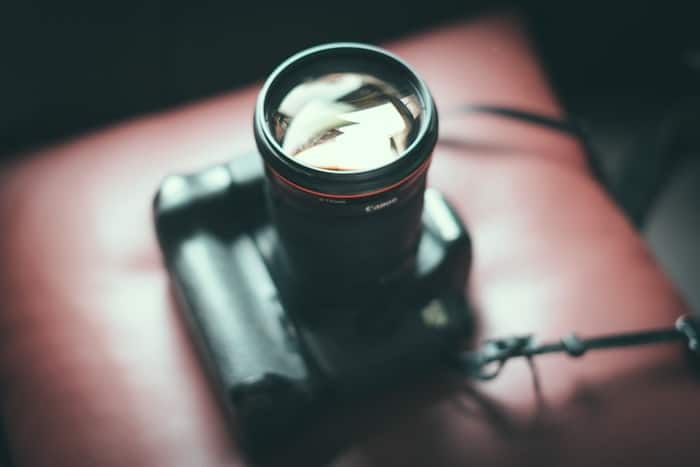
Photography Composition & Portrait Photography Masterclass. This class focuses more on composition and lighting than the technical details of how to use a camera. Paired basic existing knowledge of how to use a camera, this course is sure to take your photography skills to the next level!
- Hours: 11
- Experience Level: Beginner
- Rating: 4.4 / 5 with nearly 700 ratings
Ultimate Photoshop Training: From Beginner to Pro. This class is perfect for really learning how to edit your photos and make them shine after you’ve left the studio. Photoshop can be really difficult to use at first, and learning how to use it to its fullest potential is a great way to take your photos from good to great.
- Hours: 12.5
- Experience Level: Beginner
- Rating: 4.5 / 5 with nearly 7,000 ratings
Inside Your Dog’s Mind with Victoria Stilwell. This class is not a photography class, but it’s an excellent introduction into how dogs think and feel.
As you learn to understand body language and dog communication, you’ll be able to apply that to taking photos of pets.
- Hours: 3
- Experience Level: beginner
- Rating: 4.1 / 5 with nearly 1,000 ratings
Fenzi Dog Sports Academy Photography Series. Fenzi Dog Sports Academy is the premier online academy for all things dog sports.
They have been running several intensive photography classes lately that focus on preparing you for photographing your dog, dog shows, and dog competitions. These courses can be quite intense and are generally more expert-level than those on Udemy. Check the schedule to see what’s available now.
- Hours: 6-week self study course
- Experience Level: intermediate to advanced
- Rating: Highly rated, but no star system on Fenzi Dog Sports Academy.
Udemy runs frequent sales, so don’t be deterred by high price tags! Keep an eye on the courses and see how much you can save. Keep in mind that these early investments in your business will help you make more profits later.
Also remember that you can deduct course sales as business expenses later for taxes!
How Much Do Pet Photographers Make?
Pet photography can be an expensive field to break into. Depending on your area and your success with marketing, pet photography can also be a difficult business to maintain.
On average according to The Balance Careers, photographers around the United States made about $32,500 per year in 2017 and $43,000 in 2018. These statistics don’t separate out animal photographers from other sorts of photographers.
According to Hair of the Dog Blog, pet photographers tend to make far less than other photographers – just $19,000 per year.

Competition is fierce for full-time photography positions, though freelance photography and running your own business comes with its own challenges.
In some areas, it will be difficult to make a full-time salary on just pet photography. You may need to supplement your income, especially at first, with event photography, wedding photography, portrait photography, or other freelance gigs.
Pet Photography Pricing: How Much Should You Charge?
It’s always difficult to price your own freelancing and business. It’s smart to start out by checking Yelp and other directories for other local pet photographers and see what their rates are.
This will help you estimate how much to charge for your area. Pet photographers in New York or Los Angeles are probably able to charge much more than photographers in a small town.
It’s also important to remember that more experienced photographers with better portfolios can charge more. If you’re a beginner with a small or non-existent portfolio, you’ll probably have to start with more affordable pricing.

Most photographers offer a few different packages to help owners select what’s best for their pet and their budget.
Common package options include:
- A “destination” photoshoot for $75-$250 per hour. This generally includes an hour of photography and a set number of edited photos or prints.
- A studio photoshoot for $50-200 per hour. Again, this generally involves an hour of your time and a certain number of photos for the pet parents.
- Extra time for $30-100 per hour.
- An extra fee of $25-$50 for additional animals.
- A fee for additional edited photos, prints, or digital rights to the photos. This fee can vary widely from $10 to much more, depending on what sort of prints you’re offering.
NOTE: Offering customers full rights to the digital photos will allow them to print photos themselves at convenience stores or even order mugs with their pup’s face on it. Since you’re giving over unlimited access to the shots, rather than just a few prints, this can be a big money-maker.
Keep in mind that you’ll need to set your prices in the sweet spot where owners are willing to pay, but it’s worth your time.
Although $250 for a one-hour photo shoot sounds like a lot to an owner, it actually includes at least three to five hours of your time and access to thousands of dollars of equipment!
Some photographers also offer regular budget photoshoots where people can come to the studio for mini sessions that are much cheaper – consider offering these as a way to cater to more people and build your portfolio.
Also consider what kind of pricing structure will work best for your clients and you (you may need to experiment a bit to figure out what works). Do you offer a cheaper studio session fee and hard sell the digital photos? Or do you offer a pricier package that includes several prints and digital access?
Do I Need Insurance For My Pet Photography Business?
It’s always a good idea to get business insurance – especially when you’re dealing with expensive photography equipment!
Insuring your photography business will help you protect yourself and your business.
Insurance may cover:
- Medical bills
- Repairs
- Liability insurance for any spaces that you rent
- Damage to your own equipment
- Commercial automobile insurance in case your insurance doesn’t cover commercial usage of your car
- Disability insurance in the event that you are the sole breadwinner of your home and something happens to you
There are several affordable photographer insurance plans available through Full Frame Insurance.
Pet Photography Business Plans
It’s important to really plan out your business before jumping in. While you may already be a skilled photographer with lots of passion, running a business isn’t easy!
Check out some of these online pet photography business plans to get yourself started.
- BPlans.com Pet Photography Business Plan
- Hair of the Dog Academy – includes business plan work in the course.
- Profitable Venture’s Pet Photography Business Plan
Pet Photography Inspiration
Get inspired! Looking at the websites, blogs, and Instagrams of other excellent pet photographers is one of the best ways to really up your game. Here are some of our top picks:
- Zoo Studio. This studio produces some of the hands-down most amazing photos of pets I’ve ever seen. Be prepared for National Geographic-equse inspiration here!
- Skylight Pet Photography. This studio is high-quality yet offers some attainable inspiration. Skylight does a great job in the studio in particular with some fun shots.
- Barkography. This photographer does an excellent job of playing with colors to make pets really stand out. Study how this studio uses backgrounds to bring out the best in pets.
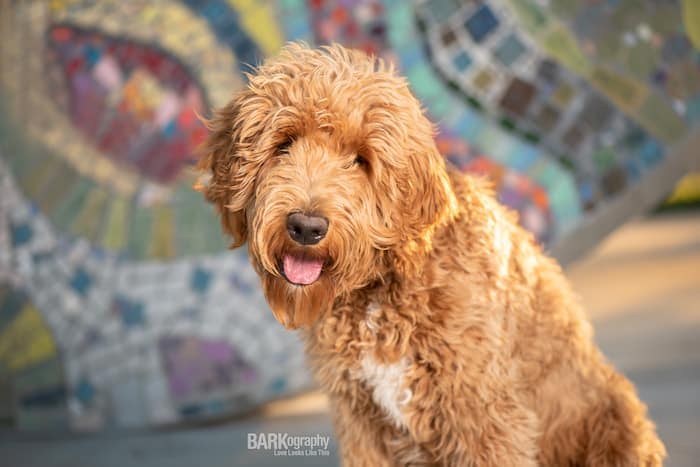
- Westway Studio. This studio specializes in outdoor portrait photography. Enjoy the beautiful lighting and get inspired by how they capture the joys of pets in their photos!
- Adventures of Ego on Instagram. For gorgeous photos that you can spend hours scrolling through, look no further than this account. Ego is a ridiculously attractive border collie who spends a lot of time traveling. Get inspired by this account’s focus on the outdoors and adventure!
- Nelle and Ellen on Instagram. Like the Instagram account above, Nelle and Ellen is very outdoorsy. Study this account to learn a lot more about editing, how to pose your dog, and how to capture the moments of joy in the outdoors.
Pet photography can be a fun hobby or a great business. Either way, it requires a bit of work and equipment to get started.
Whether you’d rather start learning the basics of composition and editing with your phone or you want to jump right in with a new DSLR and a few classes, you’ll quickly be able to help others capture the beauty of owning a pet.
How did you get started as a pet photographer? Let us know your top tips in the comments below!
Know you want to work with dogs, but are flexible with careers? Make sure to also check out our articles on A) the best jobs for dog lovers B) how to get started as a professional dog trainer!
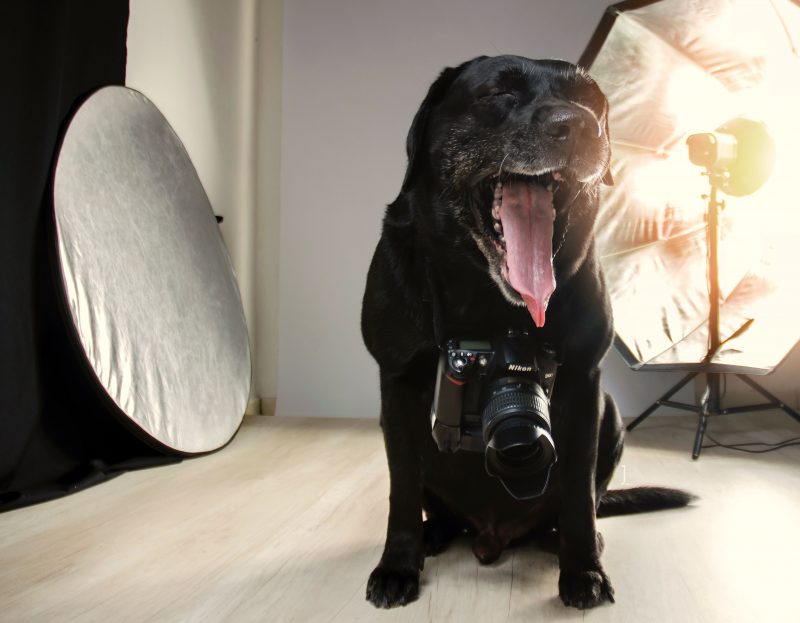

![How to Become a Pet Photographer: A Beginner's Guide 9 Julius Studio [Enhanced Heavy Duty] 10.1 x 8 ft. (W x H) Backdrop Stand Background Support, Upgraded Strong Frame, New Metal Cap, Shock-Proof Spring, Heavy Joints, Anti-Slip Rubber Shoes, JSAG283](https://m.media-amazon.com/images/I/41+t34ENm5L.jpg)




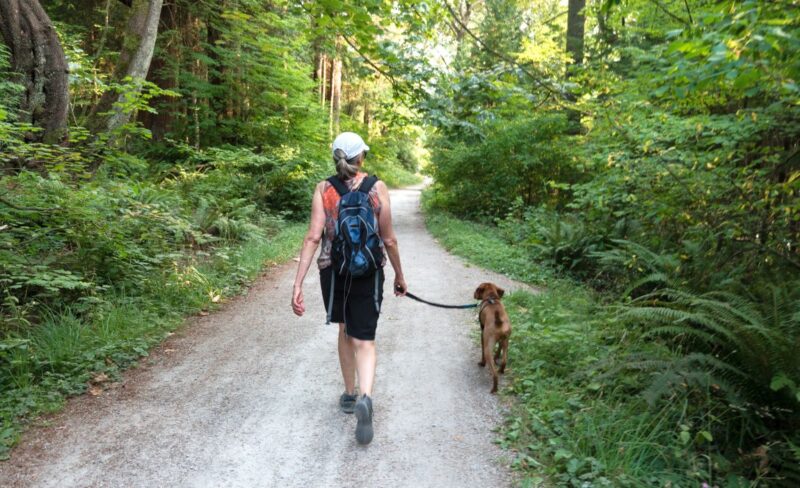
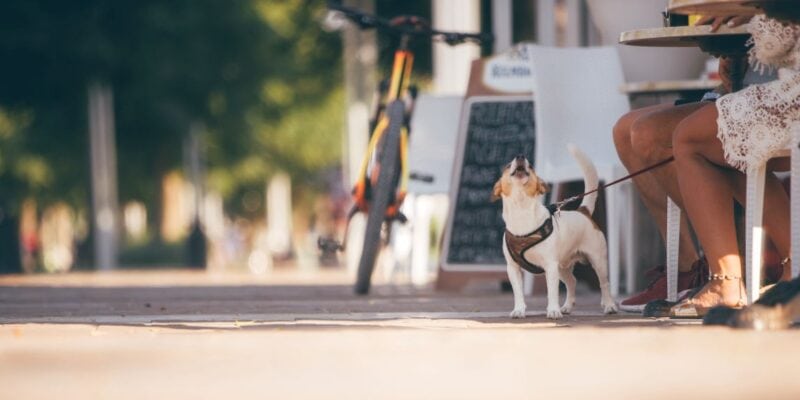
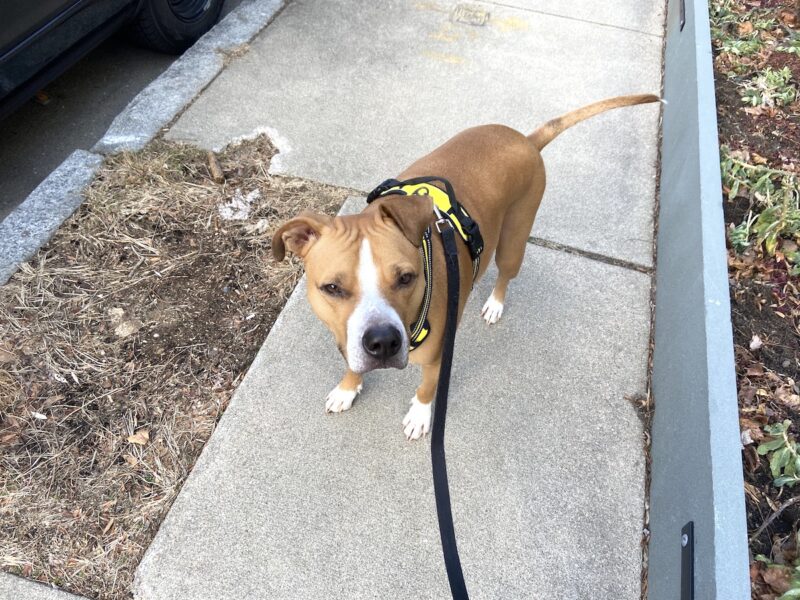

Leave a Comment